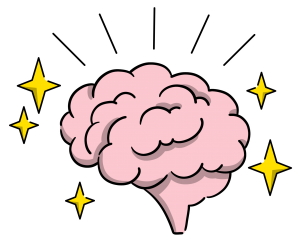How Video Enhances Semantic Memory
Semantic Memory refers to general world knowledge that we have accumulated throughout our lives. This store of general knowledge (facts, ideas, meanings and concepts) is built from a very young age, and it is an ongoing process. One could say that Semantic Memory is a sort of “unintentional learning” – our brains “unintentionally” store general information that we can later retrieve, as needed.
Semantic Memory vs. Episodic Memory
Semantic Memory is distinct from Episodic Memory, which is our memory of experiences and specific events. Semantic Memory allows us to automatically know that dogs do not like cats, without having to search our brains for a specific event where we have experienced this truth. Episodic Memory, on the other hand, might contain a specific memory of interaction with a particular dog.
When we use Semantic Memory, we “automatically” remember information… It may be something like the fact that there are 60 minutes in an hour, or that there are 4 seasons. We sort of “just know it”. It is a type of memory that we constantly use without even knowing that we are retrieving the information. (It appears to be stored, as well as retrieved, automatically!)
Video and Semantic Memory
Semantic Memory is almost like a type of mental dictionary that organizes words, concepts, and symbols. It allows us to interpret the world in which we live. Because Semantic Memory is only where we record general facts and knowledge (and not where we record personal experiences), video comes in handy to build this cognitive resource.
Magnetic resonance imaging has shown that the brain does not have just one specific region dedicated to semantic knowledge. Different parts of the brain are responsible for the retrieval of different Semantic Memories. Consequently, Semantic Memory can be divided into separate visual categories, such as size, color and motion. Related to visuals is the Sensory Semantic Theory. This is related to Semantic Memory because pictures are perceptually more distinct from one another than words, which increases their chance for retrieval.When it is not possible for individuals to experience a certain situation for themselves, video material (rich in motion, sound and imagery) can greatly extend Semantic Memory.
In addition, studies have shown that we learn better and more quickly if we give meaning to the concepts that we learn. When watching a video you see as well as hear the information – consequently, more meaning is given to the concept. So, by watching various videos on various topics, Semantic Memory stores the meanings to words involved in the video topic. Concepts are grouped and categorized into an infinite number of areas (e.g. animals, objects, living things, non-living things, mammals, reptiles, etc.) to enhance Semantic Memory.
Using Videos to Enhance Semantic Memory
 You may not have to personally experience situations for Semantic Memory to increase, but surroundings and culture have a great impact upon Semantic Memory. For example, football in the U.S.A. refers to a different sport in European countries. Surroundings and culture thus affect the connections we make in Semantic Memory. Through the use of video material you can extend your cultural surroundings and experience other cultures and so enhance your Semantic Memory.
You may not have to personally experience situations for Semantic Memory to increase, but surroundings and culture have a great impact upon Semantic Memory. For example, football in the U.S.A. refers to a different sport in European countries. Surroundings and culture thus affect the connections we make in Semantic Memory. Through the use of video material you can extend your cultural surroundings and experience other cultures and so enhance your Semantic Memory.
One excellent way to improve Semantic Memory is to remember a series of words and to increase the amount and difficulty of the word. For example, watch a video documentary on the U.S.A. and then try to recall the different states as well as their capitals.
Learning a new language strengthens Semantic Memory. What better way to learn a new language than making use of video material that teaches new vocabulary, grammar rules and sentence structures?
Semantic Memory helps us to follow “scripts” – that is to follow a certain procedure in certain circumstances. (For example, when you go to a restaurant you get seated, order food, enjoy the meal, and wait for the bill before you pay and leave again.) These “scripts” may also be learned through the viewing of video material. These could be especially useful if the “scripts” involve more unusual events, like “what to do when a neighbor has a heart attack”, or “how to survive when being lost in a jungle”.
Travel increases Semantic Memory. As we see new places and learn about new cultures Semantic Memory is expanded. However, it may not always be practical or possible to travel, but video may take you on a virtual tour, to a new place where you may experience other cultures and simultaneously expand your Semantic Memory.
Semantic Memory is vital for recognizing objects, interpreting words and for acquiring new information. It contains all of the general knowledge about our world and it builds stock on an ongoing basis. Video material allows for you to accumulate even more information that can be stored as Semantic Memory. And so, video material helps to extend your cognitive dictionary.
